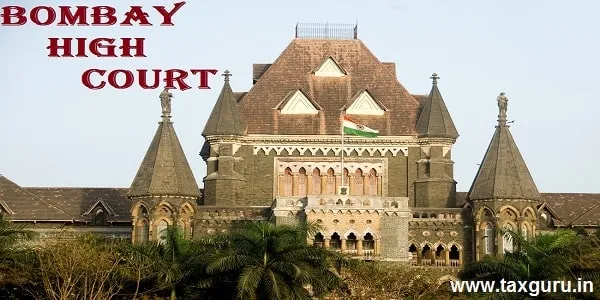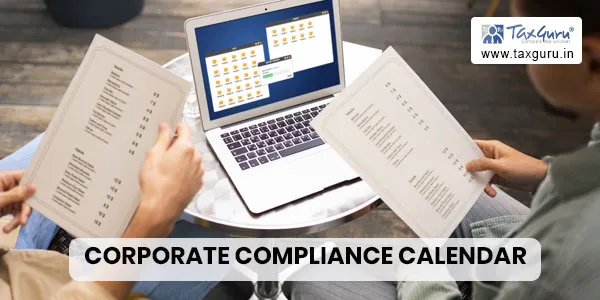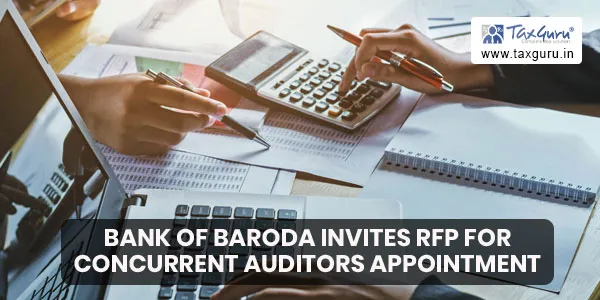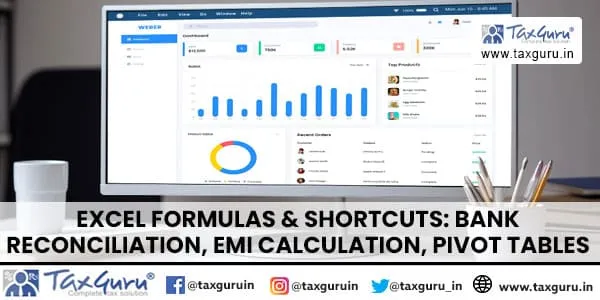Case Law Details
ITO vs. LKP Securities Ltd (ITAT Mumbai), I.T.A. No.638/Mum/2012 & I.T.A. No.1093/Mum/2012 , Date of Pronouncement- 17.05.2013
Revenue’s second ground concerns the dis allowance u/s.2(24)(x) r.w.s. 36(1)(va) of the Act on account of employee’s contribution to the Employees Provident Fund (EPF) and Employees State Insurance Corporation (ESIC) in the sum of Rs.35,70,973/- and Rs.46,229/- respectively. The A.O. made the dis allowance on the basis that the payments were made beyond the due date, being 15th of the following month in respect of contributions to the Provident Fund, and 21st of the following month in the case of payments to ESIC. Further, the grace period of 5 days for payment of PF contribution was only with respect to non-charge of penal interest and other penalties under the relevant Act. The same would not by itself extend the due date, with reference to which date only the allow ability of the sum required to be paid by the assessee in respect of the employee’s contribution is to be reckoned. Reliance was placed by him on the decisions in the case of CIT vs. South India Corporation Ltd. [2000] 242 ITR 114 (Ker.) and CIT vs. Sree Kamakhya Tea Co. (P.) Ltd. [1993] 199 ITR 714 (Cal.).
The ld. CIT (A), in appeal, ruled in favor of the assessee in view of the decision by the apex court in the case of CIT vs. Alom Extrusions Ltd. [2009] 319 ITR 306 (SC), as well as in the case of CIT vs. AIMIL Ltd. [2010] 188 Taxmann 265 (Del.) [321 ITR 508]. Aggrieved, the Revenue is in appeal.
The issue BEFORE ITAT is the allow ability or otherwise in law of the sums paid by the assessee-employer by way of employee’s contribution to the Provident and the Employees State Insurance Corporation (ESIC) Funds where the said payment is made beyond the due date as defined under the relevant statutes, though before the due date of the filing of the return of income for the relevant year.
The dis allowance having been deleted by the ld.CIT(A) with reference to section 43B, on which also the assessee basis its case, it would, therefore, be firstly required to be seen if the deduction qua the said payment is regulated by the said section, i.e., s.43B. This becomes also relevant as the decisions by the apex court in the case of Vinay Cement Ltd. (supra) and Alom Extrusions Ltd. (supra) relied upon by the assessee concern section 43B only, i.e., in respect of the retrospectivity or otherwise of the amendment thereto by Finance Act, 2003, w.e.f. 01.04.2004 (by way of omission of the second proviso as well as reference to clauses (a) and (c) to (f) in the first proviso to the section), holding in favour of the same being curative and, thus, retrospective.
Section 43B as it is stood prior to the said amendment reads as under: “Certain deductions to be only on actual payment.
43B. Notwithstanding anything contained in any other provision of this Act, a deduction otherwise allowable under this Act in respect of—
(a) any sum payable by the assessee by way of tax, duty, cess or fee, by whatever name called, under any law for the time being in force, or]
(b) any sum payable by the assessee as an employer by way of contribution to any provident fund or superannuation fund or gratuity fund or any other fund for the welfare of employees, or
(c) ………………………………….
(d)…………………………………..
(e) ………………………………….
(f)………………………………….
shall be allowed (irrespective of the previous year in which the liability to pay such sum was incurred by the assessee according to the method of accounting regularly employed by him) only in computing the income referred to in section 28 of that previous year in which such sum is actually paid by him :
Provided that nothing contained in this section shall apply in relation to any sum referred to in clause (a) or clause (c) or clause (d) or clause (e) or clause (f) which is actually paid by the assessee on or before the due date applicable in his case for furnishing the return of income under sub-section (1) of section 139 in respect of the previous year in which the liability to pay such sum was incurred as aforesaid and the evidence of such payment is furnished by the assessee along with such return.
Provided further that no deduction shall, in respect of any sum referred to in clause (b), be allowed unless such sum has actually been paid in cash or by issue of a cheque or draft or by any other mode on or before the due date as defined in the Explanation below clause (va) of sub-section (1) of section 36, and where such payment has been made otherwise than in cash, the sum has been realized within fifteen days from the due date.”
[emphasis, ours]
Vide amendment by Finance Act, 2003 w.e.f. 01.04.2004, the second proviso stands omitted, as also reference to clauses (a) and (c) to (f) in the first proviso. Section 43B is a non obstante clause providing for an overarching and additional qualification, so that it would operate without exception. As such, it would apply to any sum covered thereby, irrespective of the section or the provision governing the deduction in its respect. As per its terms, the sums specified in clause (a) to (f) would, where otherwise allowable, yet have to satisfy the test or condition of payment for the same to qualify for deduction. The deduction, in the event of non-payment, would stand deferred to the year of actual payment. An exception, by way of first proviso to the section, is drawn to sums specified in clauses (a), (c) to (f), so that the payment would not stand to be disallowed if it is made by the due date of filing the return of income for the relevant year. For the payments covered by clause (b), the time limit prescribed, however, is the due date as defined under Explanation to section 36(1)(va), i.e., the time period allowed per the relevant Act.
Having gone through the anatomy of the section, we are now in a position to answer our first question, i.e., if the payment of the employee’s contribution is covered u/s. 43B(b). In our clear view, it is not. This is for the reason that section 43B covers only the sums payable by way of contribution by the assessee as an employer, i.e., the employer’s contribution, inter alia, the PF and ESI funds. Under the said Acts (i.e., Provident fund Act and the Employees State Insurance Act), the employer is to deduct a prescribed percentage of the employee’s remuneration, as the employee’s contribution to the said fund/s. He is further obliged to make a matching contribution, and pay the entire sum to the credit of the employee’s account with the relevant fund by the due date under the relevant Act. Both the contributions are to be paid simultaneously, vide separate challans though, the due date for which is the same. The employer’s contribution is deductible u/s. 37(1) of the Act, being only a part of the employee cost or of his employment. The employee’s contribution, on the other hand, is to be deducted from the salary/wages due to the employee, i.e., for which the assessee is contractually obliged as an employer, so that no separate expenditure stands incurred in its respect and, consequently, there is no question of the same being claimed or allowed as an expense. So however, section 2(24) of the Act, the provision which defines ‘income’ under the Act, i.e., inclusively, vide sub-clause (x) thereof, deems the sum so retained by the employer toward the employee’s contribution (for onward payment) as the employer’s income; the said section reading as under:
“Definitions.
2. In this Act, unless the context otherwise requires,—
(24) “income” includes-
(x) any sum received by the assessee from his employees as contributions to any provident fund or superannuation fund or any fund set up under the provisions of the Employees’ State Insurance Act, 1948 (34 of 1948), or any other fund for the welfare of such employees;”
[emphasis, ours]
Section 36(1)(va) of the Act correspondingly provides for deduction qua these sums where paid to the credit of the employee’s account in the relevant fund by the due date. ‘Due date’ is defined per Explanation thereto as a date by which the employer is required to credit the employee’s contribution to the employee’s account in the relevant fund under any Act, or any Rule, order, notification, etc., issued there-under; the relevant provision reading as under:-
“Other deductions.
36. (1) The deductions provided for in the following clauses shall be allowed in respect of matters dealt with therein, in computing the income referred to in section 28 – (i) …
(va) any sum received by the assessee from any of his employees to which the provisions of sub-clause (x) of clause (24) of section 2 apply, if such sum is credited by the assessee to the employee’s account in the relevant fund or funds on or before the due date.
Explanation.—For the purposes of this clause, “due date” means the date by which the assessee is required as an employer to credit an employee’s contribution to the employee’s account in the relevant fund under any Act, rule, order or notification issued there-under or under any standing order, award, contract of service or otherwise;”
[emphasis, ours]
As would be apparent from a bare reading of the provision, the deduction is subject to the actual payment and, further, by the ‘due date’. It is, therefore, abundantly clear that while deductibility of the employer’s contribution (to the relevant fund) is governed by section 37(1), that of the employee’s contribution, which is deemed as income u/s.2(24)(x), is by section 36(1)(va). It is only the former that is covered by section 43B, per clause (b) thereof. This is manifest from the clear language of the provisions, viz., ss. 2(24)(x), 36(1)(va) and 43B(b). Further, as the due date for both the payments, or the credit in its respect thereof to the employee’s account, is the same, section 43B(b), in deviation of the norm of the actual payment during the relevant year, or modified/amended norm of payment by the due date of filing of the return of income for the relevant year, provides for the same basis for deduction thereof under the Act., i.e., the payment by the due date. This, thus, also explains the rationale in providing for a separate payment prescription for sums specified u/s. 43B(b), i.e., as against the uniform prescription for those falling under the other clauses of section 43B.
Continuing further, as afore-noted, section 43B provides for an additional qualification of payment (by the date specified there-under), failing which the deduction would stand to be allowed only in the year of actual payment. That is, it subjects the deduction to the additional condition of payment. The sum under reference, however, must be otherwise allowable, i.e., under a particular provision, i.e., but for the factum of payment, the additional condition provided by the section. Now when section 36(1)(va) itself provides for the condition of actual payment, section 43B would even otherwise be rendered of no consequence. That is, even if we were to overlook the clear language of section 2(24)(x) r.w.s. 36(1)(va) (on one hand) and section 43B(b) (on the other), so that they clearly concern separate and distinct sums, and consider, for the sake of the argument, section 43B(b) as applicable to section 36(1)(va) payments, it would be rendered otiose. This is as the sum under reference has to be ‘otherwise allowable’, i.e., under the relevant provision. The payment by the due date u/s. 36(1)(va) having not been made, the same is not allowable there under, so that there is no scope for application or invocation of section 43B. On the other hand, if the payment has been made, section 43B again becomes of no functional relevance. This aspect stands also explained by the tribunal in the case of Bengal Chemicals & Pharmaceuticals Ltd. (supra), following its earlier order in ITA No. 1255/Kol./2010 dated 19.11.2010, also reproducing therefrom at para 5 of its order. Reference in this context is also drawn to, inter alia, para 8 of the said order, citing the reasons why in its view section 43B does not apply to the payment of the employee’s contribution. In fact, even as noted by the tribunal its order in ITA No. 1255/Kol./2010 (supra), this aspect stands also clarified by the Special Bench of the tribunal in the case of Jt. CIT v. ITC Ltd. [2008[ 112 ITD 57 (Kol.)(SB), holding that section 43B does not apply to payment of the employee’s contribution. Rather, as would be clear, section 43B, even assuming applicability, would become relevant only if it provides for payment terms most stringent than that provided by section 36(1)(va). This is as it is only in that case that the prescription of ‘otherwise allowable’ would stand met, so as to consider the satisfaction or otherwise of the additional, more stringent condition qua payment. Quite on the contrary, we have been found the payment terms for sums specified u/s. 43B(b) to be at par with that provided u/s.36(1)(va), and which in fact gets relaxed by amendment by Finance Act, 2003 (w.e.f. 0 1.04.2004) to the due date of the filing of the return (for the relevant year), i.e., as in the case of payments falling under the other clauses of section 43B. The deduction of the employee’s contribution, which is deemed as the employer’s income u/s.2(24)(x),and which is subject to deduction u/s.36(1)(va) is, thus, without doubt not governed by section 43B.
The decisions by the apex court in the case of Vinay Cement Ltd. (supra) and Alom Extrusions Ltd. (supra) are admittedly with reference to section 43B and, further, qua the scope of the amendments thereto. The deductibility of the employee’s contribution is not regulated by section 43B. Further, even if so considered, the said section would not come into play as the sum under reference has first to be ‘otherwise allowable’, satisfying the test of the relevant provision under which it is deductible, before the deduction could be subject to the additional rigor of section 43B. It is, therefore, difficult to see as to how these decisions would have any bearing on the issue of the deductibility of the employee’s contribution to the employee welfare funds, which is governed solely by section 2(24)(x) r.w.s. 36(1)(va) and, as such, independent of and de hors section 43B of the Act. Consequently, the amendment/s to this section would be of no consequence. This aspect stands also explained by the jurisdictional high court in the case of Pamwi Tissues Ltd. (supra) as well. The same, we are conscious, stands reversed by the apex court vide its decision in the case of Alom Extrusions Ltd. (supra). However, the reversal is on the issue that stands decided and was the subject matter of the decision by the apex court, i.e., the retrospectivity or otherwise of the amendment to s. 43B by way of omission of the second proviso and the deletion in the first proviso thereto by Finance Act, 2003 w.e.f. 01/4/2004. The decision in the case of Pamwi Tissues Ltd. (supra), in fact, endorses the decision in the case of CIT v. Godaveri (Mannar) Sahakari Sakhar Kharkhana Ltd. [2008[ 298 ITR 149 (Bom.), wherein issues other than those relating to the said amendment to s. 43B were also referred to. These questions remain unanswered or unaddressed by the decision in the case of Alom Extrusions Ltd. (supra). In fact, a mere reference to the question referred to the hon’ble apex court, which stands set out by it at the beginning of its decision and, therefore, it sets out to and, accordingly, answers, would dispel any doubt in the matter, even as we have also carefully perused the judgment. A decision, it is trite, is an authority for what it actually decides (refer: CIT v. Sun Engineering Works (P.) Ltd. [1992] 198 ITR 297 (SC); Blue Star Ltd. v. CIT [1996] 217 ITR 514 (Bom.)). Further, as explained by the apex court in the case of CIT v. Murlidhar Bhagwan Dass [1964] 52 ITR 335 (SC), a ‘finding’ can only be that which is necessary for the disposal of the appeal for the relevant year, or to put in a broader context, to answer the question that is referred to and, accordingly, answered by the court. There is no finding by the Honorable apex court that the employee’s contribution, deduction of which is subject to s. 36(1)(va), is further subject to s. 43B. Nor, for that matter, a finding that s. 43B would apply even where the sum under reference is not, even as stated by the tribunal in the case of Bengal Chemicals & Pharmaceuticals Ltd. (supra), allowable under the relevant provision, i.e., is not otherwise allowable. These aspects, even as sought to be emphasized with reference to the question posed and answered by the apex court, did not arise for consideration by the Honorable court. Rather, we have labored to explain the unfeasibility and the inoperability of s. 43B even if, ignoring the clear identification of the separate sums referred to in ss. 36(1)(va) and 43B, per the clear language of the said provisions, where it is sought to be applied to the sums covered u/s. 36(1)(va). The tribunal in the case of Bengal Chemicals & Pharmaceuticals Ltd. (supra), as well as per its earlier decision in ITA No. 1255/Kol./2010, has also considered the decision by the apex court in the case of Alom Extrusions Ltd. (supra), finding it as not germane to the specific issue under reference, i.e., the deductibility of the employee’s contribution, being not covered by sec. 43B(b) of the Act.
Coming, next, to the decision in the case of CIT v. AIMIL Ltd. (supra). We have gone through the said decision, which stands again considered by the tribunal in the case of Bengal Chemicals & Pharmaceuticals Ltd. (supra). No doubt, the said decision covers payment of employee’s contribution to EPF and ESI funds. However, as a perusal of the decision would show, the entire deliberation therein, as well as the subject matter of the decision, is qua s. 43B, including the amendments thereto. In fact, the Honorable court moved on the premise that the employee’s contribution is subject to clause (b) of s. 43B and, accordingly, the interpretation of the section, as well as the nature of the amendments thereto, engaged its mind. Specific reference in this context may be drawn to para 11 of the judgment, whereat the Honorable court, after delineating the provisions of ss. 2(24)(x) and 36(1)(va), goes on to state that, however, s. 43B(b) stipulates that such deduction would be permissible on actual payment. We have already noted that s. 36(1)(va) itself prescribes the condition of payment for deduction and, besides, equal if not more rigorous than that provided by s. 43B. The decision by the tribunal, which stands approved by the Honorable court in the case of AIMIL Ltd. (supra), stands rendered without considering the decision by the special bench of the tribunal in the case of ITC Ltd. (supra), besides being also inconsistent with the decision by the Honorable jurisdictional high court in Godaveri (Mannar) Sahakari Sakhar Kharkhana Ltd. (supra) insofar as the latter relates to the inapplicability of s. 43B to payments specified u/s. 36(1)(va). Finally, the absence of the relevant findings in the case of Alom Extrusions Ltd. (supra), also attend the decision in the case of AIMIL Ltd. (supra). We are therefore with respect not persuaded to follow the decision in the case of AIMIL Ltd. (supra); rather consider it as not applicable/germane and, on the contrary, are inclined to follow the decision by the special bench in ITC Ltd. (supra) as well as in the case of Bengal Chemicals & Pharmaceuticals Ltd. (supra), both of which are consistent with the decisions by the Honorable jurisdictional high court on the material aspect. In doing so, we also derive support from the decision by the hon’ble jurisdictional high court in the case of CIT v. Thane Electricity Supply Ltd. [1994] 206 ITR 727 (Bom.).
The deductibility of the impugned payments has thus to be seen only with reference to s. 36(1)(va), which has not witnessed any material changes since its insertion on the statute by Finance Act, 1987 w.e.f. 01/4/1988. As such, deduction would be exigible where the payment is made by the due date, i.e., under the relevant Act. In this regard we observe that the AO has not allowed the ‘grace period’ of five days in case of payments under the Provident Fund Act. This is as the ‘due date’ is defined under the said Act, which could not be superseded by any circular or notification. Secondly, the extension is only for the limited purpose of non-levy of any penal interest or penalty, and does not operate to alter or redefine or extend the due date, which stands clearly defined, and is constant/fixed. We have given our careful consideration to the matter. In our view, the payment/s made within the grace period as allowed by virtue of any circular, order, etc. would be eligible for deduction u/s. 36(1)(va). The language of the provision accords primacy to not only the relevant Act, but also to any circular, order, notification, etc. issued thereunder. Two, a ‘due date’, for all practical purposes, as also by definition, is the date by which the relevant action (payment in the instant case) could be performed so as to be considered as eligible, and without inviting any penal consequences. As such, the benefit of the ‘grace period’ could not be disallowed, and which would rather bring the two enactments in harmony. In so deciding, we also derive support from the decision by the hon’ble jurisdictional high court in the case of Godaveri (Mannar) Sahakari Sakhar Kharkhana Ltd. (supra) inasmuch as the Honorable court has clearly held in favor of allowing the benefit of the grace period afore-said. The AO is accordingly directed to allow deduction u/s. 36(1)(va) where any payment is made within the grace period. We decide accordingly, and the Revenue gets part relief.





















problem is income tax Act faces changes every year by one or other finance Acts.. so AOs need to be very careful, else they would fall under culpable negligence like mens rea they use in sec 271(1)(c)..without care if any one does culpable negligence would attract…AOs need to be careful and they cannot offend the taxpayers they are the kamadenu for the revenue of the govt.. can any one offend a kamadenu!